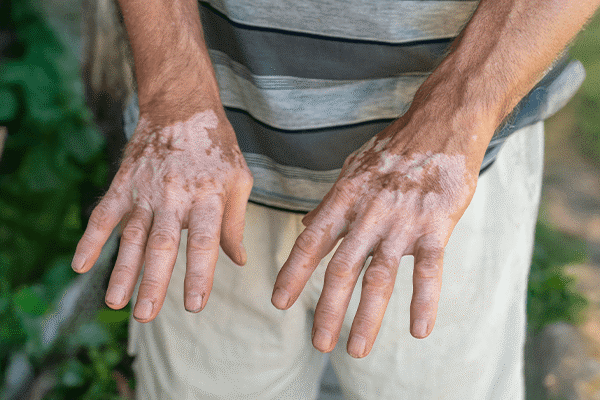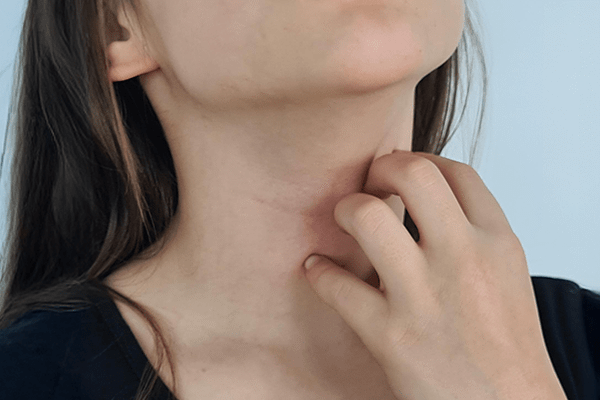Updated on November 15, 2023
Introduction
Erythema Annulare Centrifugum (EAC) is a chronic skin disorder that manifests as circular lesions that are grouped in clusters. It is thought to be a hypersensitivity reaction to various stimuli and is prevalent among all age groups and genders.
The EAC rash resembles urticaria, so it is important to understand similar conditions to prevent confusion. If your doctor gives you a diagnosis of urticaria, you are more than welcome to participate in Revival’s Chronic Spontaneous Urticaria clinical trials.
What is EAC Rash?
Erythema Annulare Centrifugum is a rare condition that happens alongside other conditions including infections. On physical inspection, it presents multiple annular scaly erythematous patches with fine desquamation in the inner portion of the advancing edge. The central portion appears as a central pale portion. This condition can happen anywhere on the body but typically affects the thighs, buttocks, and upper arms.
Is EAC Rash Contagious?
Erythema Annulare Centrifugum is best described as a delayed type of hypersensitivity response. The EAC rash itself is not contagious however, it can occur due to certain bacterial, fungal, or viral infections that are contagious, but also medications, foods, malignancy, or other systemic diseases or conditions (such as pregnancy).
Correlation between COVID-19 and Erythema Annulare Centrifugum
One newly emerging virus that is causing a surge in the number of EAC rash cases is the COVID-19 virus. This is not only true for adults but also for pediatric patients. One great way to contribute to the development of new medications and vaccines is to enroll in Revival’s COVID-19 clinical trials or the combined COVID-19 and Influenza clinical trials.
How to Treat Erythema Annulare Centrifugum?
Multiple medications help with EAC rash management. These can include topical steroids and calcineurin inhibitors or systemic medications like Fluconazole, Azithromycin, Erythromycin, and Metronidazole.
Diagnosing Erythema Annulare Centrifugum
EAC can be diagnosed based on clinical features if the characteristic trailing scale is evident. However, a skin biopsy is usually necessary for a confirmational diagnosis. A typical EAC skin biopsy reveals a dense perivascular lymphocytic infiltrate involving the superficial or deep vascular plexus, often called a ‘coat sleeve’ appearance. Additionally, secondary changes to the epidermis, such as spongiosis, parakeratosis, and hyperkeratosis, may be observed.
To identify the exact cause, the patient’s medical history and examination findings should be given due diligence. Age and symptom-appropriate cancer screening should also be considered. If fungal infections like onychomycosis, tinea pedis, or tinea corporis are suspected, toenail clippings and skin scrapings can be submitted for mycology.
Difference between Erythema Annulare Centrifugum and Other Conditions
Erythema Annulare Centrifugum may resemble other skin conditions with annular characteristics, making the differential diagnosis very challenging. Conditions to consider include:
- Erythema Perstans: A paraneoplastic eruption linked to underlying malignancy, characterized by concentric and whirling rings.
- Erythema Gyratum Repens: A paraneoplastic rash featuring a ‘woodgrain’ appearance with rapidly expanding erythematous lines in a concentric pattern.
- Necrolytic Migratory Erythema: Ring-shaped red rashes that blister, erode, and crust over time, often associated with glucagonoma, a glucagon-producing tumor.
- Erythema Marginatum: A rash occurring in acute rheumatic fever, presenting as pink or red macules or papules spreading outward in a circular shape with a sharp border.
- Erythema Multiforme: Targetoid lesions occurring on the hands and feet, consisting of reddish-pink macules that enlarge to form plaques with central clearing or color changes.
- Erythema Migrans: The first stage of Lyme disease, marked by an expanding red patch of skin that starts at the site of a tick bite and gradually enlarges.
Some other conditions that should be a part of the differential diagnosis include tinea (dermatophyte infection), cutaneous lupus erythematosus, granuloma annulare, erythema papulatum centrifugum, seborrheic dermatitis, secondary syphilis, discoid lupus, pityriasis rosea, porokeratosis, chronic plaque psoriasis, and sarcoidosis.
Also read: Pityriasis Rosea Foods to Avoid
The Takeaway
Erythema Annulare Centrifugum is a dermatological condition that can become persistent and recur. It is quite difficult to diagnose because of its overlapping symptoms. One remarkable thing about the disease is its increasing prevalence, along with other dermatological conditions, after the appearance of COVID-19 on the world stage.
Revival Research Institute offers a range of dermatological clinical trials at its various locations across the United States. If you would like access to novel therapy, you may want to check out our studies that are currently enrolling.






